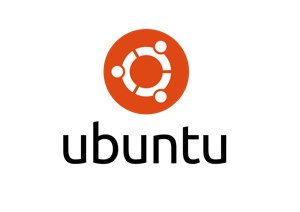 Last summer I did a short how-to about replacing the Unity desktop on Ubuntu with any other of the main flavors of Ubuntu. I had used that technique several times by then and I’ve used it since, but it occurred to me that I was still in the position of having to do a good bit of tweaking to get things into the shape I liked best.
Last summer I did a short how-to about replacing the Unity desktop on Ubuntu with any other of the main flavors of Ubuntu. I had used that technique several times by then and I’ve used it since, but it occurred to me that I was still in the position of having to do a good bit of tweaking to get things into the shape I liked best.
In particular, if I added either lubuntu- or xubuntu-desktop to the basic Unity, I wound up having to remove Abiword. I have nothing personal against Abiword, but as someone who does a good bit of writing, I am a lot more comfortable with the power and flexibility of LibreOffice Writer. What makes it doubly annoying is that downloading Abiword, Gnumeric, Thunderbird, and all the other things I don’t really want to add to the installation takes forever on my slow and fragile DSL connection (no alternative, out here in the sticks!)
Last fall, when I was preparing to install Ubuntu 13.10 on a test machine (real machine, not Vbox) I came across a short paper by Dan Nanni titled “How to install minimal Ubuntu desktop.” In that paper he showed how to install an Ubuntu server (for which the iso is much smaller than the full version, shorter to download) and add a minimal desktop to it, using the command:
sudo apt-get install --no-install-recommends xubuntu-desktop
It will give you the basic software needed to run Xubuntu, but none of the Recommends: those bells and whistles like Abiword, Gnumeric, Thunderbird, blueman, gmusicbrowser, etc., and their dependencies. I gave it a shot, it worked fine, but it took a LOT of time to add back all the little things that you really do need if you’re going to make something that is useful as a Daily Driver distro. I decided a minimal desktop was a sound idea, but there must be a somewhat better way to get to a desktop I wanted.
So the next thing I did was to install an instance of Ubuntu 12.04.4, the latest version of the LTS Ubuntu at the time (February 2014). To that I added the much lighter no-recommends form of the Xubuntu desktop, using the same command I had applied to the server version. To see what I would be adding to the Ubuntu installation, I ran:
$ apt-cache show xubuntu-desktop | grep "Depends"
And to see what I would NOT be getting in this streamlined version, I ran:
$ apt-cache show xubuntu-desktop | grep "Recommends"
Each of those listings runs well over 100 items, but they still don’t tell the whole story. I also ran the same commands to list the contents of the Depends and Recommends files for the original Ubuntu desktop, and the overlap with Xubuntu – as you can easily imagine – was enormous, even in the Recommends section.
Now I had the information I needed to set up my newly devised hybrid desktop: I already had available all the software I wanted to keep from the Ubuntu section, and I could pick and choose as much or as little of the Xubuntu as I wished. Whereas in previous total Xubuntu-desktop-on-Ubuntu installations I had wound up with duplicated, sometimes conflicting, software variants I needed to remove, now in this new form I had the option of adding on only those Xfce features I especially liked.
In the end, it turned out all I chose to add from the Recommends section of Xubuntu was Gimp (for some reason it had not been included in the 12.04.4 iso), the file finder Catfish, the archive plugin for the Thunar file manager, my favorite xfce4 terminal, and of course Synaptic. There were some minor tweaks to take care of, like removing the gnome-daemon to get the screen savers working properly, but nothing like the wholesale weeding-out I found myself doing with the method I described in the earlier article.
As soon as Ubuntu 14.04 came out I tried the same thing. Here, the only difference from12.04.4 was that when you restart after the Xubuntu installation, there is no obvious little panel right in front of you with the choice of desktop you’d like to sign in to. Instead, up in the upper right corner of the top panel there is an Ubuntu logo. Click on it and a dropdown will show you the choice. (I feel really stupid: it took me forever to find that!)
Once you overcome such annoyances, this approach offers a way to fine-tune the desktop you install on top of Ubuntu. One look at the Depends and Recommends will also give you an appreciation of how internally similar various desktops are, despite the ardent battles fought by Linuxers in defense of their favorites.





